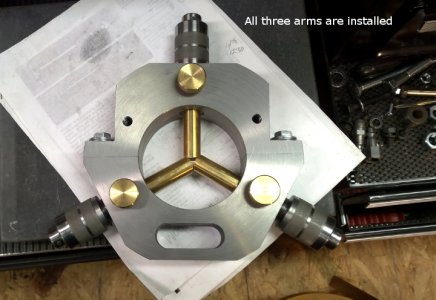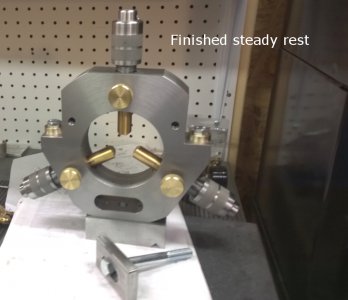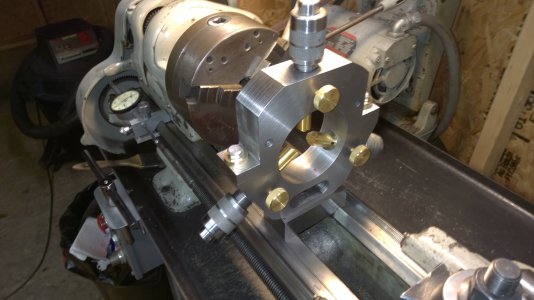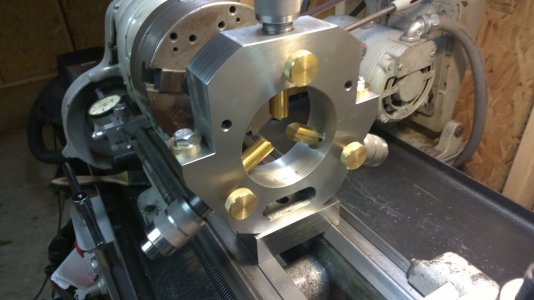Today I finish machined the steady rest body. I fly cut .010" off the three flat surfaces where the arm assemblies go, then I chucked up the body and skimmed .008" off each side using a HHS tool with a .030 radius on the point. this gave me a very very smooth and shiny surface. I was going to paint the steady rest body, but it came out so nice , I am going to leave it natural I believe. I installed the first telescoping assembly and it took about three hours. The next two will go much quicker. My worst fear did cause a little bit of trouble and that was the threads are cut at about a class 3 fit. They fit tight and smooth individually , but when I assemble the right hand and left hand threads into the same assembly to work together, I may wish I had cut a class 2 thread. Sure enough after installing the assembly It worked great until I pinned the knob to the screw. This removed any ability for the assembly to "move" a little and the threads got a little tight. After working it a few times and oiling the threads the installed assembly works by hand. It is a little bit stiff over the whole range of travel , but is OK to turn by hand. A little stiffness is probably good because vibration will not move it. South bend put a brass pin held with a wire spring ring on the knob to give it a little drag when turning to keep it from moving from vibration. I chose not to include this on my version and it isn't needed anyway because the stiffness is kind of built in my unit. Over all, I am very pleased with the way this is turning out. I won't bore you with the installation of the other two arms , which I will do tomorrow, but will post an update on the finishing up of this project with some photos.
Mark
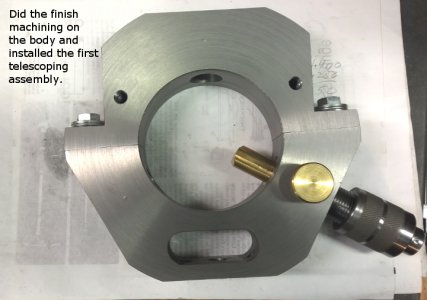

Mark




